Again at Computex 2024, AMD unveiled their highly anticipated Zen 5 CPU microarchitecture throughout AMD CEO Dr. Lisa Su's opening keynote. AMD in
Again at Computex 2024, AMD unveiled their highly anticipated Zen 5 CPU microarchitecture throughout AMD CEO Dr. Lisa Su’s opening keynote. AMD introduced two new shopper platforms that may make the most of the recent Zen 5 cores. This contains AMD’s newest AI PC-focused chip household for the laptop computer market, the Ryzen AI 300 collection. Compared to the Ryzen 9000 collection, it caters to the desktop market and uses the preexisting AM5 platform.
Constructed across the new Zen 5 CPU microarchitecture with some essential graphics and AI efficiency enhancements, the Ryzen AI 300 collection, codenamed Strix Level, is ready to ship improvements in several areas. The Ryzen AI 300 collection appears set to add one other footnote within the march in the direction of the AI PC with its cellular SoC that includes a brand new XDNA 2 NPU, from which AMD guarantees 50 TOPS of efficiency. AMD has additionally upgraded the built-in graphics with the RDNA 3.5, designed to exchange the final technology of RDNA 3 cellular graphics for higher efficiency in video games than we have seen earlier.
Additionally, throughout AMD’s latest Tech Day final week, AMD disclosed the technical particulars relating to Zen 5, which covers various critical parts beneath the hood of the Ryzen AI 300 and the Ryzen 9000 collections. On paper, the Zen 5 structure appears fairly an enormous step up in comparison with Zen 4, with the vital thing part driving Zen 5 ahead via larger directions per cycle than its predecessor, which is one thing AMD has managed to do persistently from Zen to Zen 2, Zen 3, Zen 4, and now Zen 5.
AMD Zen 5 Microarchitecture: 16% Higher IPC Than Zen 4
The AMD Ryzen AI 300 collection for cell phones and the Ryzen 9000 collection for desktop phones are powered by AMD’s newest Zen 5 structure, which brings several enhancements in efficiency and effectiveness. Maybe the most significant enhancement inside their cellular lineup is the combination of the XDNA 2 NPU, which is designed to utilize the Microsoft Copilot+ AI software program. These new cellular processors, through the NPU, can ship as much as 50 TOPS of AI efficiency, making them a significant improvement in AMD’s cellular chip lineup.
The important options beneath the hood of the Zen 5 microarchitecture embrace a dual-pipe fetch, which is coupled with what AMD is looking for in superior department prediction. This is designed to scale back the latency and enhance the accuracy and throughput. Enhanced instruction cache latency and bandwidth optimizations add to the movement of knowledge and the pace of information processing without sacrificing accuracy.
The Zen 5 integer execution capabilities have been upgraded over Zen 4, with Zen 5 including an 8-wide dispatch/retire system. A part of the overhaul beneath the hood for Zen 5 contains six Arithmetic Logic Items (ALUs) and three multipliers, which are managed via an ALU scheduler. AMD is claiming Zen 5 uses a bigger execution window. These enhancements ought to theoretically be higher with more advanced computational workloads.
Other key enhancements that Zen 5 comes with embrace extra knowledge bandwidth than Zen 4, with a 48 KB 12-way L1 knowledge cache that may cater to a 4-cycle load. AMD has doubled the maximum bandwidth available to the L1 cache, and the Floating-Level Unit has been doubled over Zen 4. AMD additionally claims it has improved the information prefetcher, which ensures quicker and more dependable knowledge entry and processing.
Zen 5 additionally introduces a 512-bit AI datapath, which uses AVX-512 with the full 512-bit knowledge path and six pipelines with two-cycle latency FADD. Though Zen 4 can assist AVX-512 directions, it uses two 256-bit knowledge paths that work in tandem with one another, with the period ‘double pumping’ being essentially the most broadly used period for it. Zen 5 now has a full AVX-512 knowledge path, a welcomed enhancement.
What AMD claims about the IPC uplift for Zen 5, AMD claims a mean enhancement of 16% over Zen 4. AMD has supplied in-house figures, which present across-the-board enhancements in varied benchmarks. This features a 10% uptick in Far Cry 6 to fifteen% in Speedometer and an excellent, more significant uplift of 21% in League of Legends. AMD’s most excellent declaration is a 35% enhancement in Geekbench 5.4 AES-XTS. That is a powerful uplift in efficiency, though the Geekbench 5 AES XTS check uses VAES+ and AVX10/512, which may be advantageous for processors that assist in these directions as Zen 5 does.
As we have seen via earlier iterations of their Zen microarchitecture, AMD is making Zen 5 throughout your complete product household. The total-fat Zen 5 cores are made on TSMC’s 4nm anode, whereas the extra compact and extra power-efficient Zen 5c cores are made on TSMC’s 3nm course of expertise. AMD’s upcoming fifth technology, EPYC CPUs, codenamed ‘Turin,’ is anticipated to launch within the second half of 2024 and will leverage as much as 192 Zen 5 cores. During their Monetary Analysts Day, AMD introduced the idea that the fifth Gen EPYC could come 2024 again in June 2022.
AMD Ryzen AI 300 Sequence: A Fast Recap
The pack from AMD’s new Ryzen AI 300 collection is the Ryzen AI 9 HX 370, with 12 Zen 5 cores, as much as 5.1 GHz, the most enhanced frequency, and comes with a 24 MB L3 cache. The Ryzen AI 9 365 is shifting down the stack, which has 10 Zen 5 cores and might enhance as much as 5.0 GHz. It has an identical 24 MB L3 cache because the HX 370 has fewer Zen 5c cores.
| AMD Ryzen AI 300 Sequence Cellular Processors
(Zen 5/Strix Level) |
|||||||
| AnandTech | Cores | Base
Freq |
Turbo
Freq |
L3
Cache |
Graphics | NPU | TDP |
| Ryzen AI 9 HX 370 | 4x Zen 5
8x Zen5c (24 Threads) |
2.0GHz | 5.1GHz | 24 MB | Radeon 890M
16 CU |
XDNA 2
(50 TOPS) |
15-54W |
| Ryzen AI 9 365 | 4x Zen 5
6x Zen5c (20 Threads) |
2.0GHz | 5.0GHz | 24 MB | Radeon 880M
12 CU |
XDNA 2
(50 TOPS) |
15-54W |
While it is possible AMD will announce extra SKUs at a later date; there are simply two for now: one from the extra performant HX collection and one with no prefix. Each Ryzen AI 300 collection chip is aimed toward high-performance notebooks. With a slightly wide TDP range of 15 Watts to 54 Watts, the chips can be positioned in anything from an ultrabook to a desktop alternative laptop computer.
AMD is utilizing its full-fat Zen 5 cores and incorporating its extra compact Zen 5c cores, which should present some trade-offs in energy effectiveness vs. efficiency. Whereas earlier fashions in AMD’s Ryzen cellular households had eight full-fat cores, the Ryzen 300 AI collection combines standard and compact cores to the desk.
The highest SKU additionally wears the HX prefix, which implies it is a part of the extra premium and excessive efficiency of AMD’s lineup. The Ryzen AI 9 HX 370 is just a 12C/24T half, however with the most recent Zen 5 cores backed with AMD’s newest Zen 5 microarchitecture beneath the hood and the entire IPC positive factors related to Zen 4, which AMD brings to the desk.
Trying on the Ryzen AI 9 365, it’s a 10C/20T half with a most enhanced frequency of as much as 5.0 GHz, and just like the Ryzen AI 9 HX 370, it additionally comes with the most recent RDNA 3.5-based Radeon 890M built-in graphics. Each chip shares this specific built-in graphics processing unit (GPU). In our earlier article, which introduced the AMD Ryzen AI 300 collection again at Computex, AMD said that the AMD RDNA 3.5 Radeon built-in graphics would function as much as 16 graphics compute models, with the Ryzen AI 9 HX 370 coming with 16 compute models, and the Ryzen AI 9 365 with 12 compute models.
AMD Ryzen 9000 Sequence: Zen 5 For The AM5 Desktop Platform
Rapidly recapping AMD’s announcement of the Ryzen 9000 collection for desktops, which uses the fully-fledged Zen 5 cores constructed on the TSMC N4 node, four new fashions are coming at launch, formally set for July 31.
| AMD Ryzen 9000 Sequence Processors
Zen 5 Microarchitecture (Granite Ridge) |
||||||||
| AnandTech | Cores /
Threads |
Base
Freq |
Turbo
Freq |
L2
Cache |
L3
Cache |
Reminiscence Assist | TDP | MSRP |
| Ryzen 9 9950X | 16C / 32T | 4.3GHz | 5.7GHz | 16 MB | 64 MB |
DDR5-5600
|
170 W | TBC |
| Ryzen 9 9900X | 12C / 24T | 4.4GHz | 5.6GHz | 12 MB | 64 MB | 120 W | TBC | |
| Ryzen 7 9700X | 8C / 16T | 3.8GHz | 5.5GHz | 8 MB | 32 MB | 65 W | TBC | |
| Ryzen 5 9600X | 6C / 12T | 3.9GHz | 5.4GHz | 6 MB | 32 MB | 65 W | TBC | |
Trying on the specs of the soon-to-be-launched Ryzen 9000 collection, AMD gives 4 X-series SKUs at launch, which permit overclocking and include unlocked CPU multipliers. The flagship SKU, the Ryzen 9 9950X, options 16 cores, a max enhanced clock of as much as 5.7 GHz, 80 MB of cache break up between 64 MB for the L3 and 16 MB for the L2 (1 MB per core of L2), and a 170 W TDP. The Ryzen 9 9900X gives 12 cores, a max enhanced clock of as much as 5.6 GHz, 64 MB of L3 cache, and a 120 W TDP.
A bodily die shot of the AMD Ryzen 9 9950X without the IHS hooked up
Shifting down the Ryzen 9000 stack is the Ryzen 7 9700X, which comes with eight cores, a max enhanced clock of as much as 5.5 GHz, 32 MB of L3 cache, and a 65W TDP. Lastly, the entry-level SKU, the Ryzen 5 9600X, has six cores, a max enhanced clock of as much as 5.4 GHz, 32 MB of L3 cache, and a 65 W TDP.
Regarding design, the Ryzen 9000 with Zen 5 cores and the Ryzen 7000 with Zen 4 cores aren’t dissimilar; despite everything, they assist the identical AM5 motherboards with the LGA1718 CPU socket. At Computex 2024, we confirmed that the Ryzen 9000 collection uses the identical I/O die because the Ryzen 7000 collection was constructed utilizing TSMC’s 6 nm course. The one actual distinction between the Ryzen 9000 and Ryzen 7000 chips is that the Ryzen 9000 incorporates the most recent Zen 5 cores instead of Zen 4 cores.
AMD Ryzen 9000 Overclocking: New Curve Shaper Characteristic
Though the Ryzen 9000 collection comes with the Curve Optimizer, which came with the Zen 3/Ryzen 5000, AMD is introducing a brand new overclocking function referred to as Curve Shaper with the Ryzen 9000 and Zen 5 platforms.
AMD’s newest overclocking function, mainly designed for Zen 5 and the Ryzen 9000 collection, Curve Shaper, is an enhanced model of Curve Optimizer, which got here with the Ryzen 5000 collection. What Curve Shaper is, and permits customers to do is tremendous tune voltage curves throughout 15 different frequency and temperature bands (3 x 5 = 15). That is designed to give customers extra detailed management over energy, CPU VCore, and frequency while sustaining stability. Enabling the adjustment of varied frequency/voltage bands, which incorporates three for temperature and 5 for frequency, permits customers to scale back the voltage in steady areas and enhance the place vital. Primarily, AMD’s new Curve Shaper function allows customers to push Ryzen 9000 CPUs to their limits while sustaining stability and with a component of energy effectivity as well.
AMD In-Home Efficiency Figures: Ryzen 9000 vs Intel 14th Gen
As we always say, take efficiency figures supplied by producers, which goes for any producer with a pinch of salt. AMD has provided some knowledge via in-house testing, which pits the AMD Ryzen 9 9900X against the Intel Core i9-14900K, the Ryzen 7 9700X against the Intel Core i7-14700K, and the Ryzen 5 9600X against the Core i5-14600K.
Beginning with the AMD Ryzen 9 9900X (12C/24T vs. the Intel Core i9-14900K (8P+16E/32T), AMD is claiming some fairly spectacular efficiency positive factors with its Zen 5 cores. Whereas it solely has a modest enhancement of two in UL Procyon Workplace, AMD is boasting a 41% uplift in HandBrake, which is utilizing some AVX-512 workload, as it is a significant bounce over the two% to 22% positive factors in different areas corresponding to in Horizon Zero Daybreak. In contrast, AMD claims the Ryzen 9900X is 16% higher in Blender. It additionally reveals the power of AMD’s Zen 5 cores by way of efficiency, though that is still to be seen when evaluations come out. It nonetheless appears very promising although.
Shifting to the Ryzen 7 9700X (8C/16T) vs. the Core i7-14700K (8P+12E/28T), AMD is claiming victories throughout a plethora of benchmarks, together with 7-Zip, UL Procyon Workplace, and HandBrake (technically, Intel 14th Gen would not formally assist AVX-512), which is the place the 42% achieve in efficiency is coming from. In gaming, AMD claims between 4% and 31% positive factors in titles, which range between Borderlands 3 (4%) and Horizon Zero Daybreak, which is on the high finish with 31%. Given the Ryzen 7 9700X has fewer cores, once more, it reveals how brisk and high-performance AMD’s newest Zen 5 cores are.
Lastly, we now have the Ryzen 5 9600X (6C/12T) vs. the Core i5-14600K (6P+8E/;20T), and we see an analogous uplift in the identical benchmarks as used within the different comparisons. Once more, HandBrake’s efficiency is through the roof at 94%, which uses AVX-512 or some variant inside the workload. Nonetheless, AMD claims between 8% and 22% within the different compute benchmarks and uplifts of between 5% and 29% in video games, together with Hitman 3, Borderlands 3, and F1 2023.
AMD claims that they’ve improved the general thermal resistance of the CPUs and managed to cut back the working temperatures of the Ryzen 9000 processors (Zen 5) over the earlier Ryzen 7000 (Zen 4) collection. Regarding thermal resistance, AMD claims a 15% enhancement over Ryzen 7000. At the same time, they declare they’ve managed to scale back working temperatures by seven °C when working at a like-for-like TDP. Sadly, when requested on the Tech Day in LA final week, AMD would not reveal how they managed these enhancements. However, that is not a shock.
Outdoors of the flagship Ryzen 9 9950X, AMD has lowered the TDP on all fashions under it compared to the earlier technology. In the meantime, the Ryzen 9 7900X has a TDP of 170 W, and the correlating alternative, the Ryzen 9 9900X, has a TDP of simply 120 W. This goes for the Ryzen 7 and Ryzen 5 collection, too, which has dropped right down to a power-efficient 65 W TDP.
Regardless of working with a decreased TDP, evaluating efficiency like-for-like, the Zen 5 cores carry out as much as 22% more significantly on the Ryzen 9 9950X vs. the Ryzen 9 7950X. In contrast, even the Ryzen 9 9900X, with a 120 W TDP in opposition to the earlier Ryzen 9 7900X (170 W), performs as much as 16% larger. One factor AMD’s Zen microarchitecture is considered is its energy effectivity, in addition to how much efficiency is retained when working at a decreased wattage than TDP. We did some energy scaling testing with the Ryzen 9 7950X in opposition to the Intel Core i9-13900K, and we have been impressed with how much efficiency the Zen 4 cores managed to retain regardless of working at a much-decreased inventory about TDP.
As we have recognized because the AM5 platform launched alongside the Ryzen 7000 collection chips again in 2022, AMD’s Zen 5 chips can be supported on the present AM5 chipset out there, together with X670E, X670, B650E, and B650 motherboards. At the same time, there’s a new wave of AM5 motherboards coming (which is a query slightly more than a solution for now) that are denoted because the 800-series (X870E/X870/B850/B840), with some motherboard distributors exhibiting fashions off again at Computex 2024 in June. There are some hypotheses about when these will launch; for now, there isn’t any official date for these 800-series motherboards to launch. This implies that customers seeking to purchase a Ryzen 9000 collection processor at launch will have to use their present AM5 motherboard or buy a 600-series board.
In actuality, each 600-series and 800-series AM5 motherboard uses the identical Promotory 21 chipset (PROM21), which ASMedia makes. The one distinction between the chipsets is that motherboard distributors can use the most recent controllers, corresponding to Wi-Fi 7. In any other case, there should not be any positive factors in efficiency when choosing an 800-series board as an alternative to a 600-series motherboard. AMD has, nevertheless, dedicated that the AM5 platform shall be considered one of longevity, with the AM5 platform being the desktop platform for desktop Ryzen CPUs till 2027.
Over the following couple of pages, we shall review the technical particulars AMD disclosed during its Tech Day 2024 in LA, primarily the AMD Ryzen AI 300 collection SoCs. These contain the brand new AMD Xilinix-built XDNA 2 NPU for AI, in addition to AMD’s up-to-date RDNA 3.5-based built-in graphics.
Share this content:

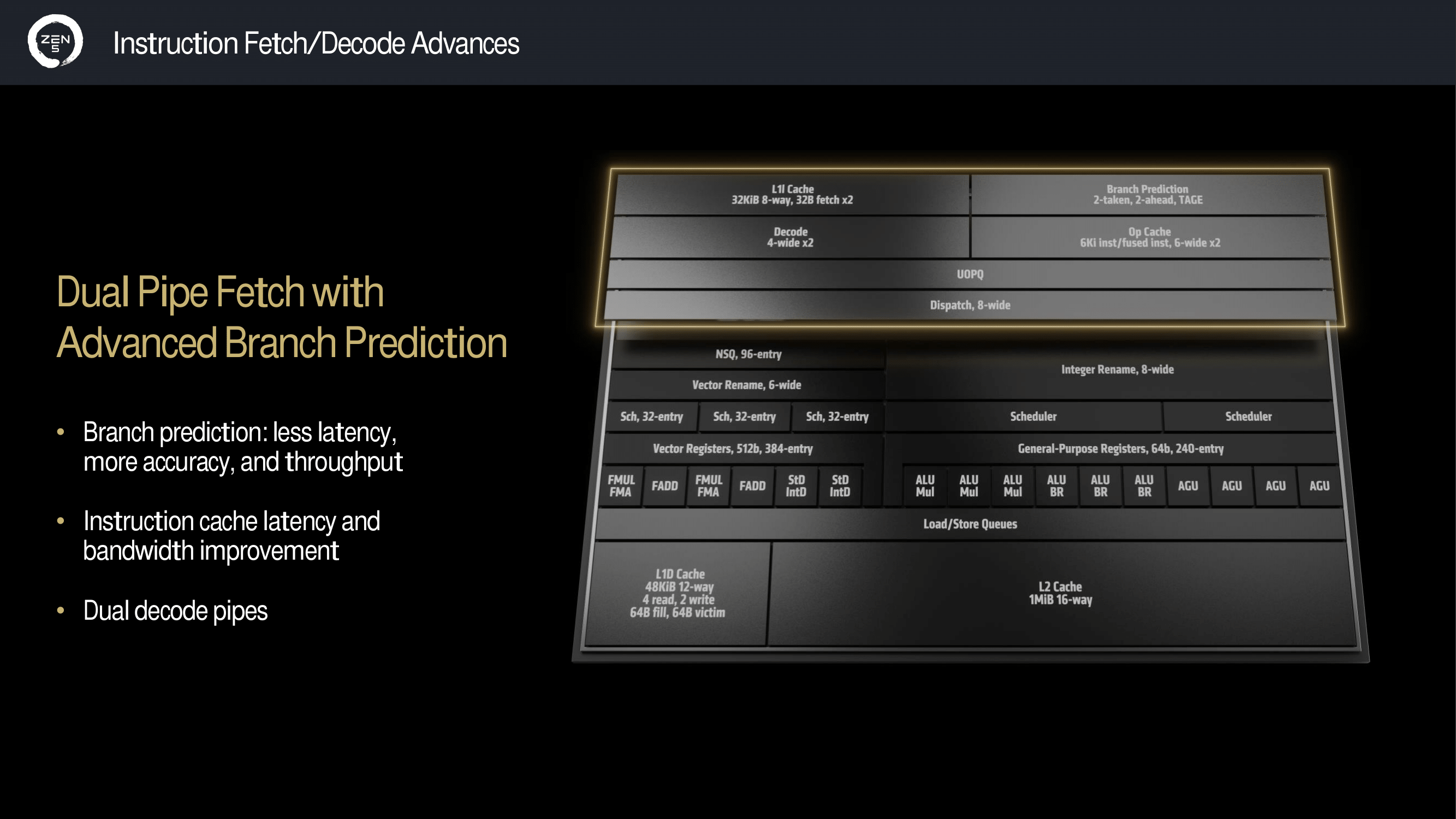
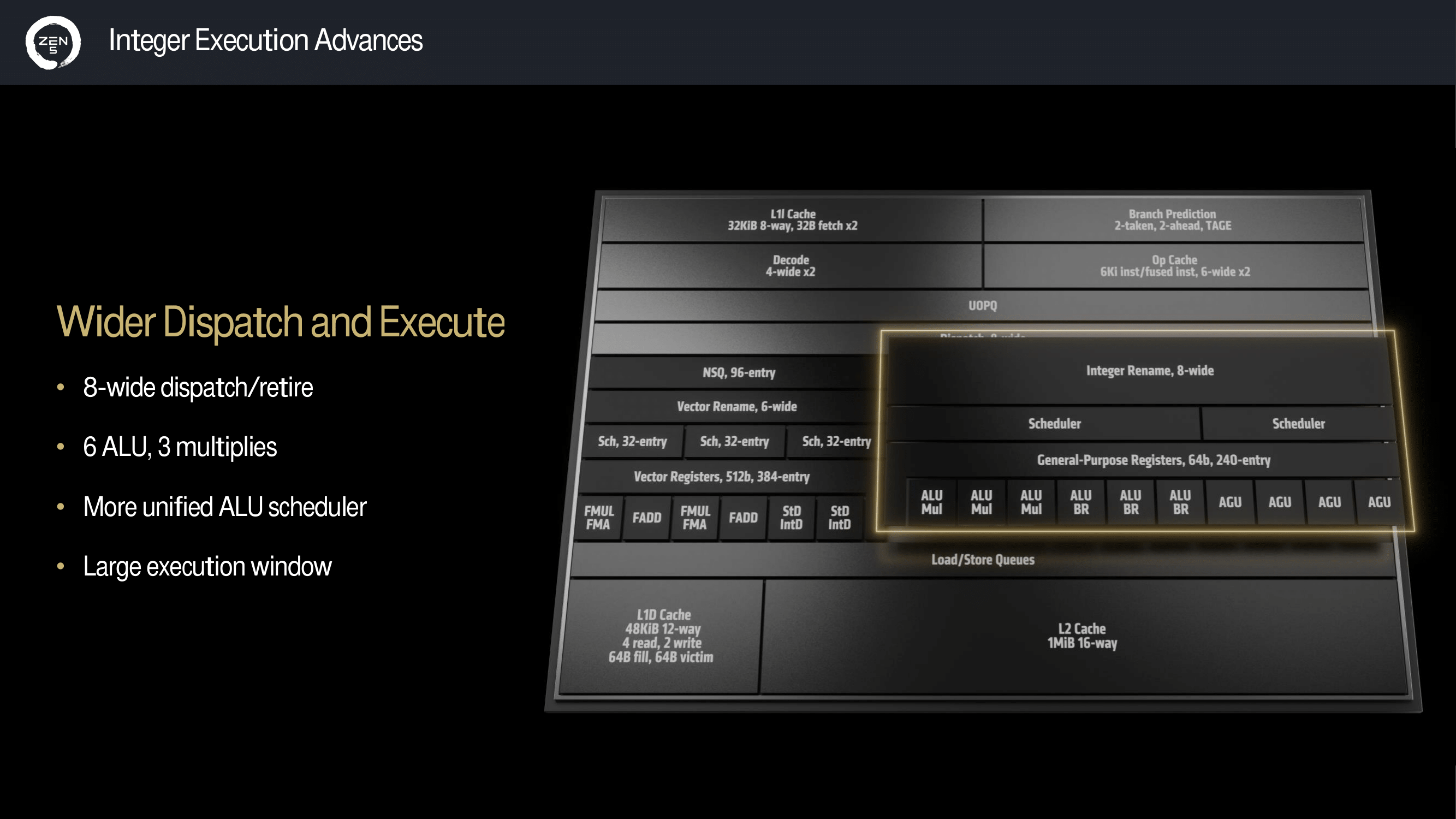
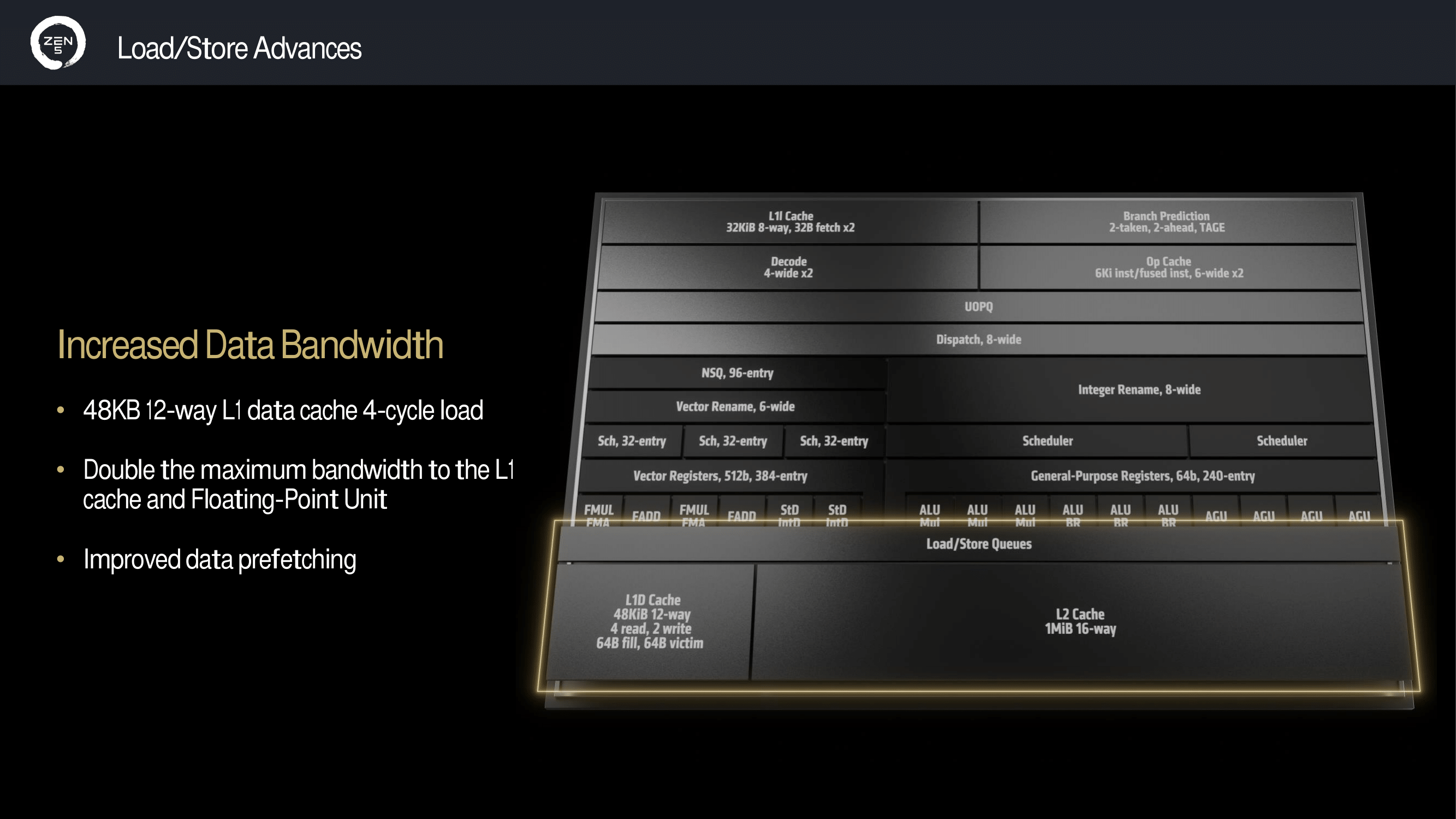
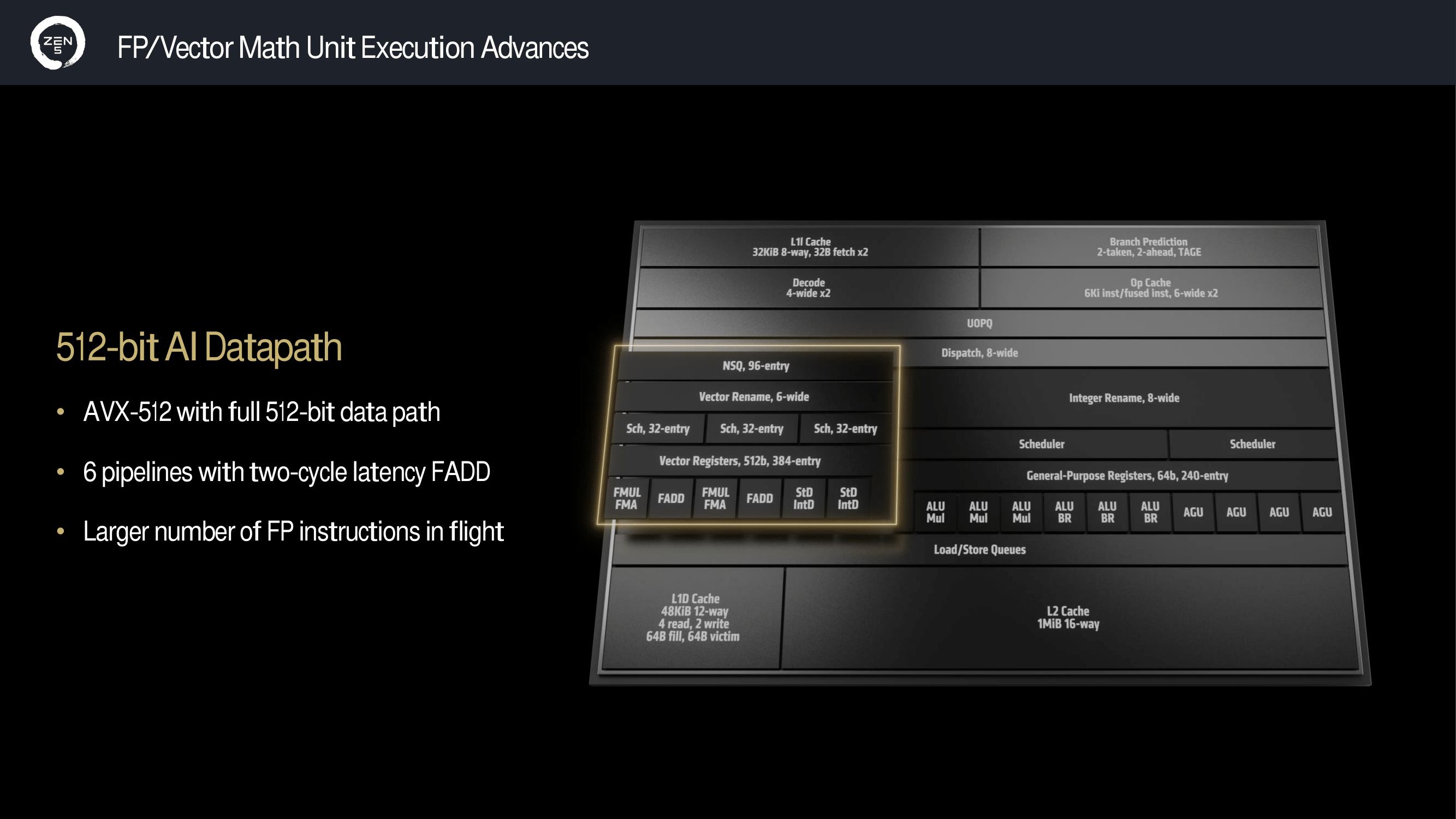
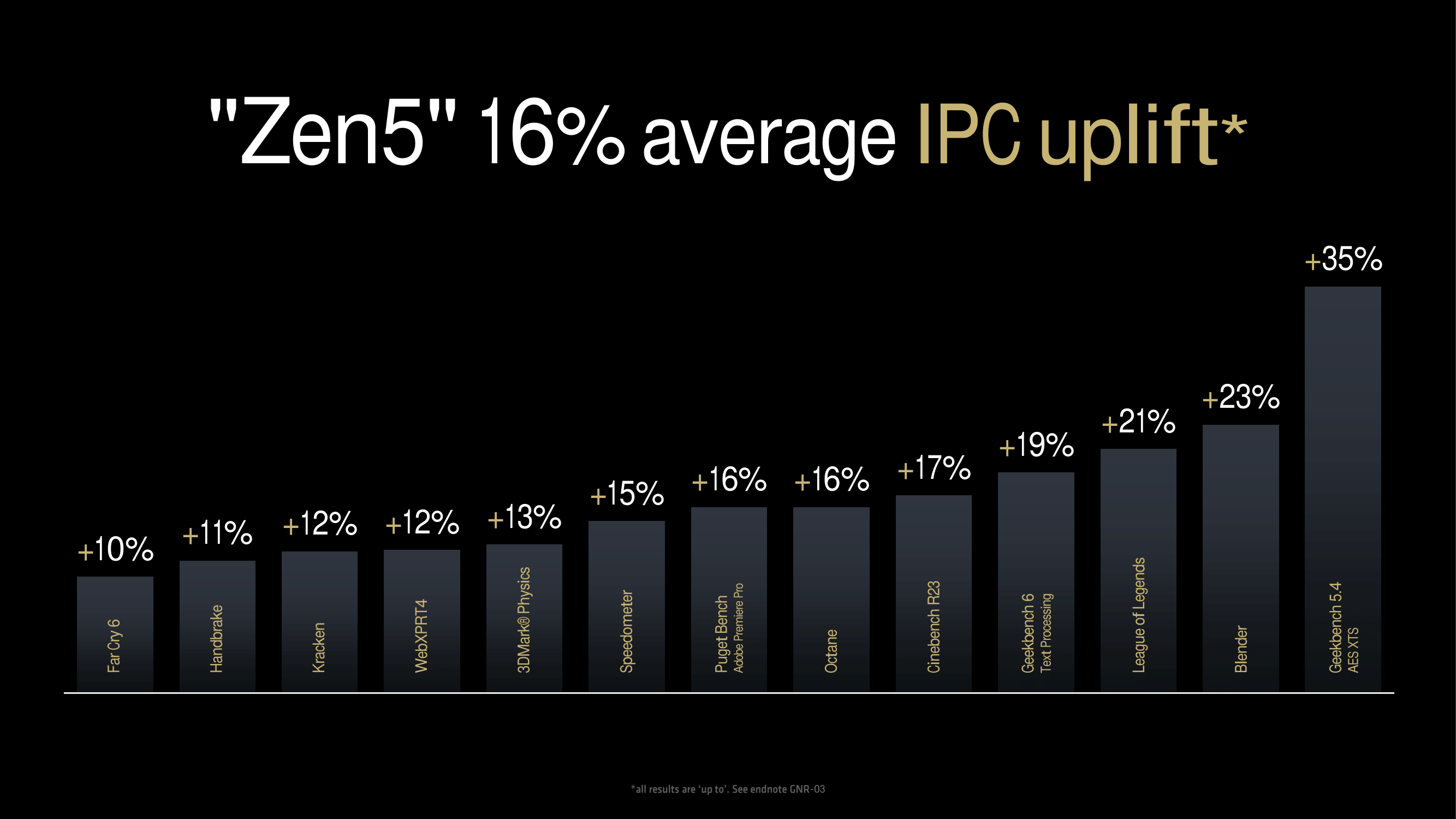
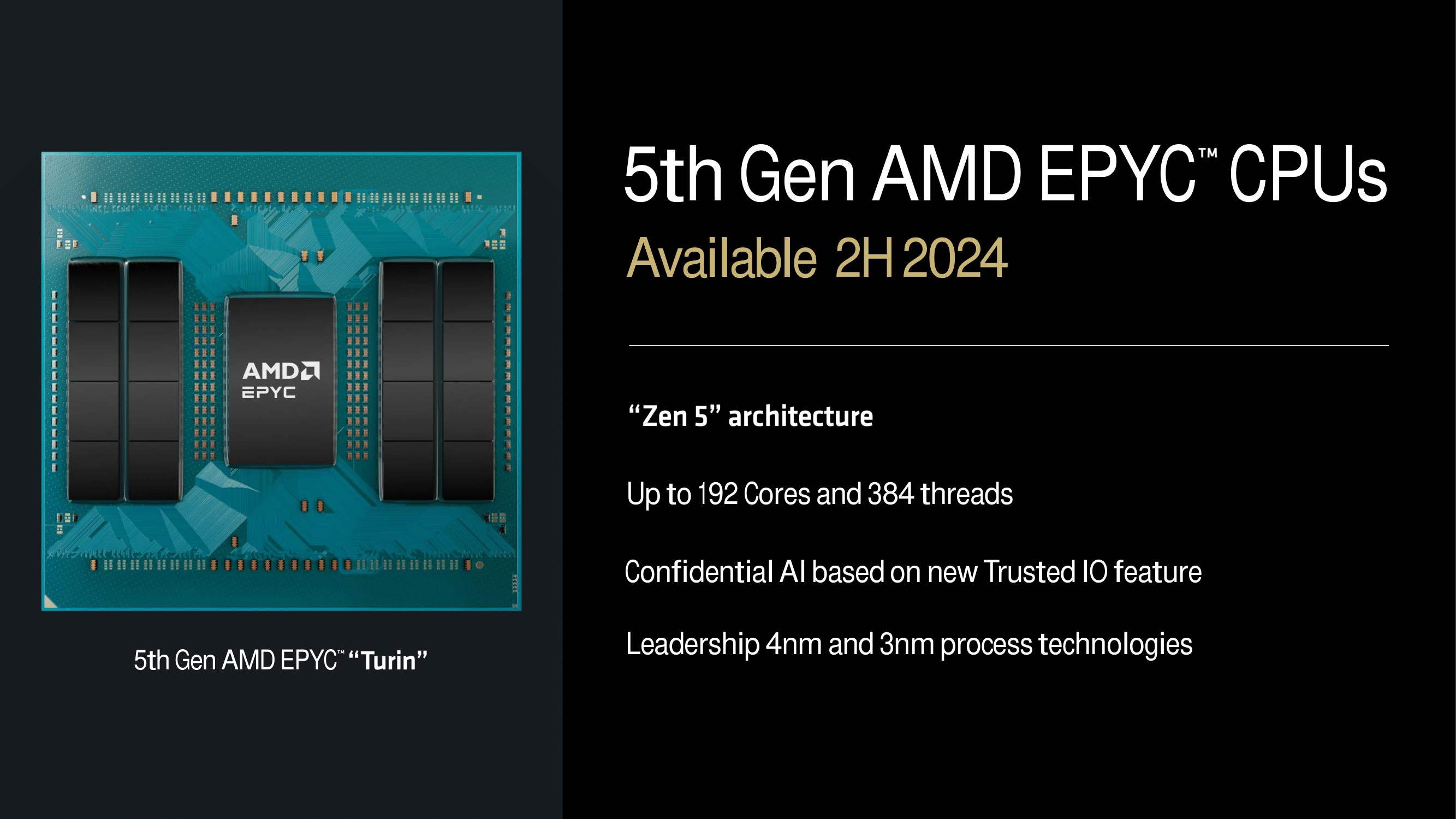
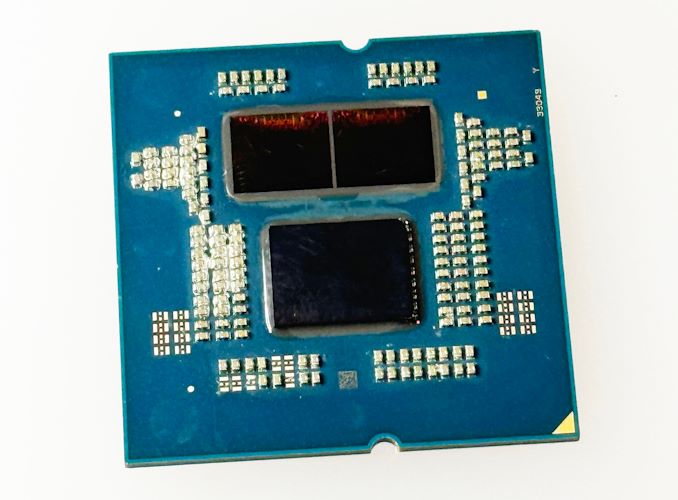
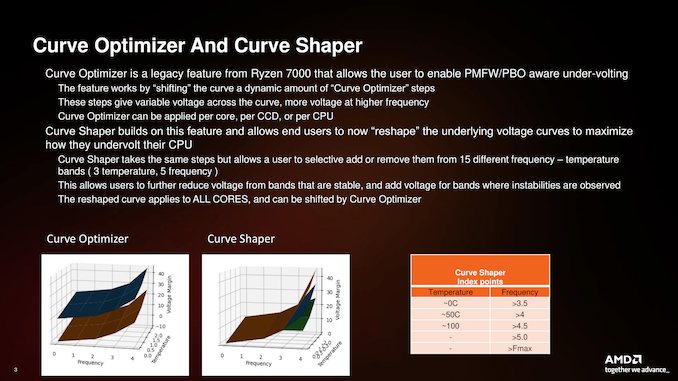
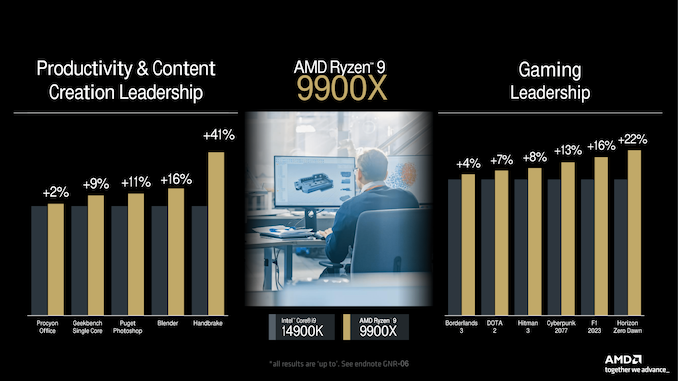
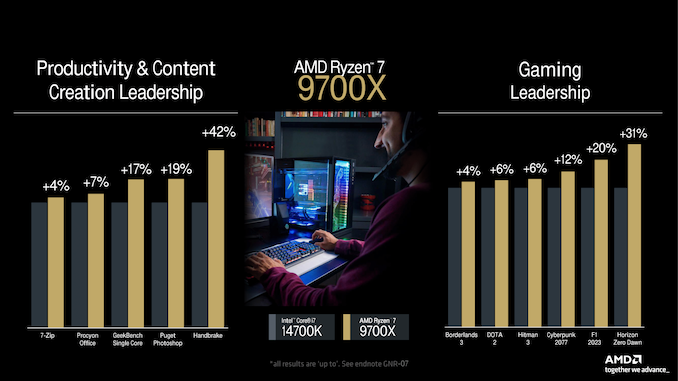
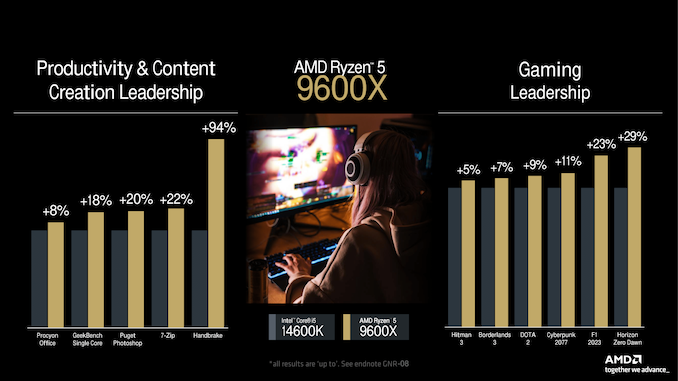
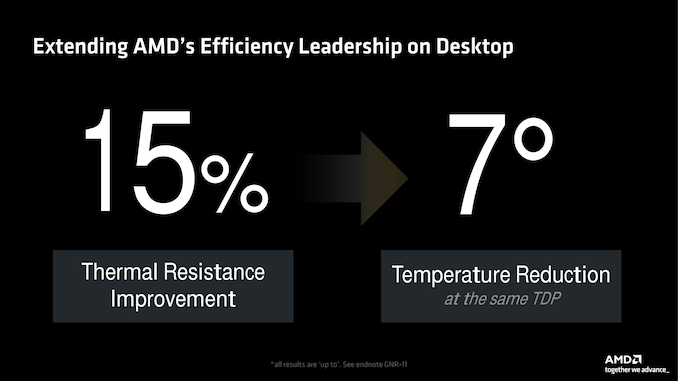

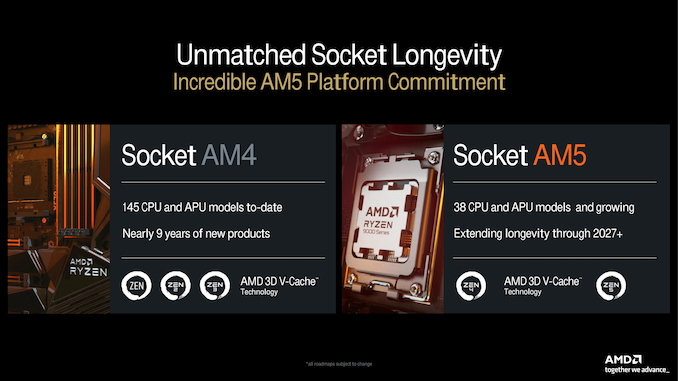
COMMENTS